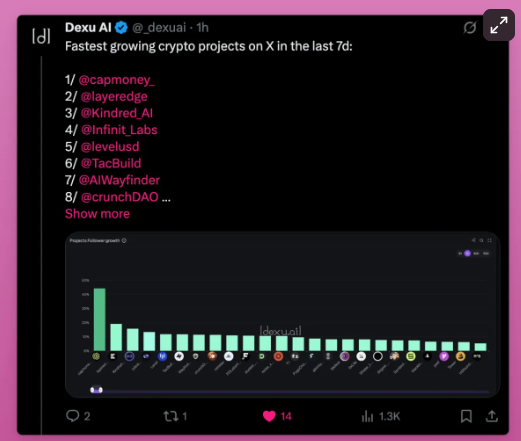Cryptocurrencies are currently constrained by the macro situation.
My X-platform feed is filled with macro analysis, not airdrop mining guides or meme coins worth buying.
At this moment, both crypto and traditional financial markets are at "extreme fear" levels (even though some tariffs have been lifted).
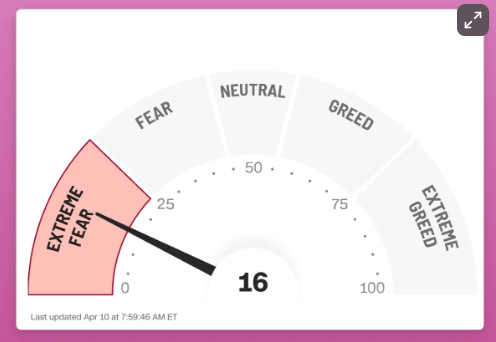
Navigating crypto has never been harder, and as a crypto content creator, I’ve never felt so overwhelmed. The temptation to publish mediocre macro analysis is extremely strong.
I agree with DonAlt: cryptocurrencies are undervalued in this crazy world.

Unfortunately, if this really marks a change in the world order and the end of the great debt cycle (as Ray Dalio suggests), we will continue to face a turbulent macro environment in the coming years.
However, localized periods of stability will occur, during which time attention can turn to progress within the cryptographic system.
The 90-day tariff suspension may also bring an oasis of opportunity.
Bitcoin - Bear or Bull?
In hindsight, I should have liquidated all my holdings in February when I published my Bull or Bear? Where does it go from here? blog.
I shared various Bitcoin on-chain data charts, and the market turned from bullish to bearish (see the chart below). Sad, please don't blame me. I have no idea like most experts on platform X.
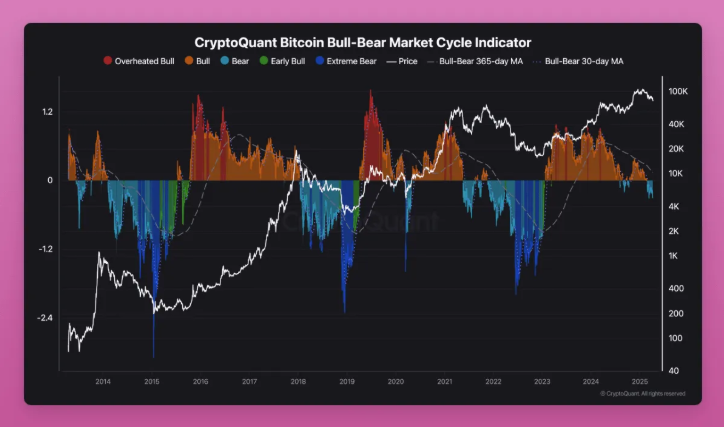
What I do know is this: unlike the current market which is driven by external macro factors, on-chain data is more important in an internally driven bull market.
Bitcoin has evolved into a macro asset, and two mainstream schools of thought are competing for the position of "truth":
- Is Bitcoin a risk-on asset like stocks?
- Or safe-haven assets like gold?
This is the big game that Bitcoin is caught in, and most people are not paying enough attention to it. If Bitcoin is not a safe haven asset and moves in the same direction as the Nasdaq, its current market value is untenable. Institutional investors will lose interest in it.
In “The Truth and Lies of Cryptocurrency in 2025,” I defined Bitcoin as an implicit hedge against macro uncertainty.
It is impossible for Bitcoin to possess the dual attributes of digital gold and risk-seeking assets at the same time.
The truth and lies of cryptocurrency in 2025
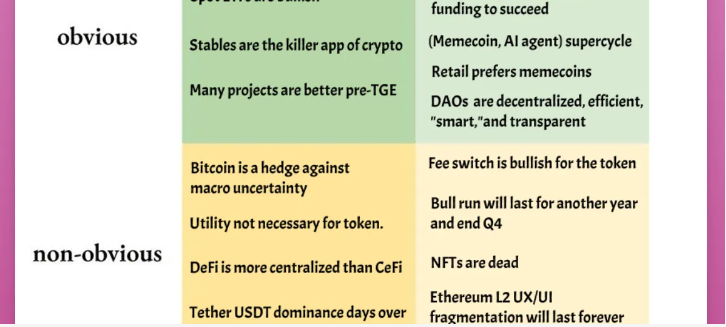
Bitcoin will reach $250,000 by 2025 and Ethereum will reach $12,000.
BlackRock's research confirms this, and even Ray Dalio, a former Bitcoin skeptic, admits that Bitcoin is a "means of wealth storage":
"In the early stages of a big debt cycle, money is 'hard', meaning it is both a medium of exchange and a store of wealth that is difficult to increase in supply, such as gold, silver and Bitcoin. Cryptocurrencies like Bitcoin are now becoming an accepted hard currency because it is widely accepted around the world and has a limited supply. The biggest and most common risk of money becoming an ineffective store of wealth is the risk of massive issuance. Imagine having the ability to print money - who can resist the temptation to print large amounts of money? Those who have the power to print money will always do so." - Ray Dalio, "How Nations Go Bankrupt: Introduction and Chapter 1"
I highly recommend reading Ray Dalio's new book, How Nations Go Bankrupt. In it, he points out that the United States is in a typical big debt cycle. Dalio believes that a new world order needs to be established while debt is being restructured.
This is the most insightful interpretation of the current world situation.
In short: the US will print money, and other highly indebted countries will follow suit. You can imagine what will happen to Bitcoin in this scenario.
You can read his ongoing book for free here (Linkedin link).
Here’s the thing: Bitcoin is currently trading closer to a risk asset than to gold (which is hitting all-time highs). I think people who see Bitcoin as a risk asset are selling it to people who see it as a safe haven.
I loved how Bellec mocked crypto-native commentators/researchers in the Bankless interview who insist that Bitcoin is a risk asset and trade based on unemployment, non-farm payrolls, or the ISM manufacturing index.
Perhaps a simpler theory to explain the current trend of Bitcoin is liquidity and money supply. When money is tight, Bitcoin trades like shit coin; when the printing press roars, Bitcoin outperforms all risky assets.
This is also the view that Crypto Hayes continues to promote.
Seriously, I expect Bitcoin to skyrocket when the fiat currency system collapses.
Ethereum — From Bad to… Still Bad
If we use fundamental indicators such as the number of active addresses and transaction fees to evaluate the value of ETH, then it makes sense for ETH to fall back to 2018 levels.

Even if the number of active addresses of Layer 2 is added, the progress is only due to the Base chain - other chains such as Optimism and Arbitrum are stagnant.
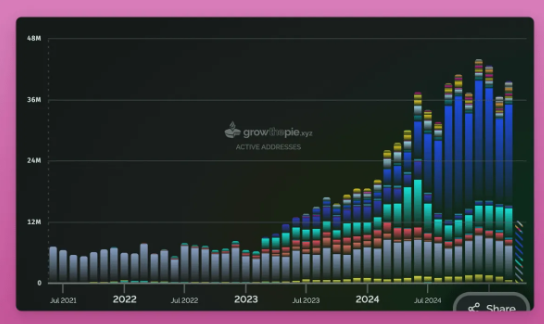
First of all, as I said in this analysis of X platform (click on the picture to read), I don’t think that transaction fees are the only criterion for measuring the value of L1:
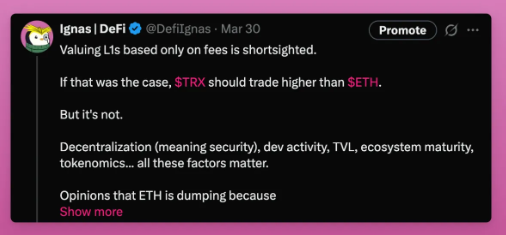
Instead of focusing on the fee diversion and viewing L2 as a threat to ETH, it is better to view ETH as a productive asset:
- ICO era: ETH is the money used to participate in token sales - the project treasury is denominated in ETH. Ironically, this still hurts the market today, as old projects are still selling the ETH they raised that year.
- DeFi Summer: ETH is the main asset for liquidity mining (used to mine various food/animal-named shit coin). For example, you need ETH to mine SUSHI in the SUSHI/ETH pool.
- NFT craze: ETH remains the mainstream trading currency
The "DeFi Gambler's Handbook" I made during the bull market is to bet on L1 as a productive asset: SUI, STX, INJ, SOL and other chains are used to mine ecological airdrop tokens. Receive airdrops → exchange for L1 tokens → cycle operation
However, most of these L1s have failed to develop an ecosystem. Even successful ones like STX and SUI have poor quality of airdrops.
My bet on ETH is Eigenlayer’s re-staking mechanism - this will make ETH the most productive asset in the history of blockchain: obtaining higher returns than ordinary staking through re-staking, while reaping a large amount of airdrops from the Eigenlayer ecosystem.
Eigenlayer failed. I thought Symbiotic had a chance, but it's not a big deal.
The bullish sign? The average cost of Ethereum holders is $2,200. This means most people are losing money.
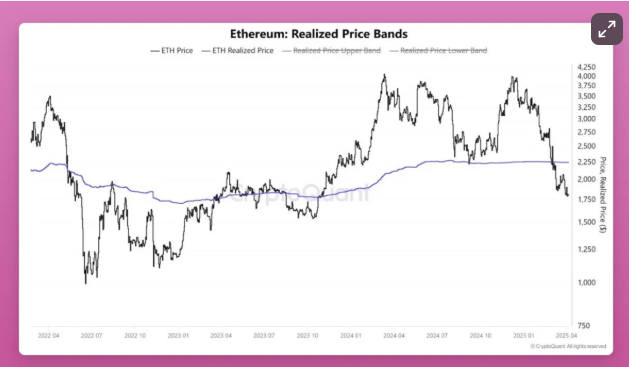
Currently, ETH is still considered a productive asset, mainly used as DeFi collateral. However, its productivity in this cycle is far inferior to SOL, which played a core role in the meme coin craze (as a medium of exchange and value storage).
I think SOL is going the same way as ETH, as no new demand narrative has emerged after the memecoin crash. However, due to SOL's low market cap and high inflation rewards, it can still earn 25% annualized returns in the Kamino Multiply pool. Where does ETH get this rate of return?
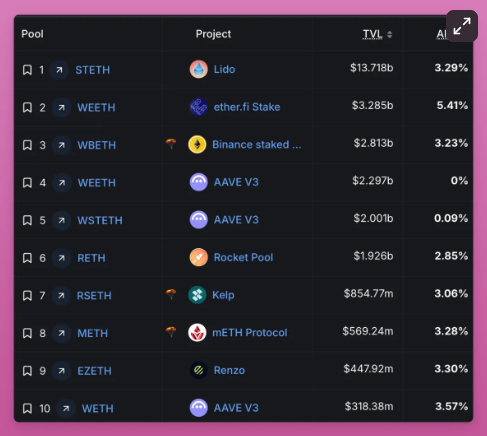
To reverse its decline, ETH needs to:
- Stable macroeconomic environment with positive risk appetite and favorable regulation
- Improving ETH’s productivity attributes
Regulatory changes in the United States are beneficial to L1 such as ETH. It will attract more stablecoins, promote asset tokenization, and accelerate overall adoption.
But even if Ethereum wins the asset tokenization race, it may not necessarily boost ETH.
Imagine Tesla stock being traded on the Ethereum chain. This is a major boon for DeFi - hundreds of billions of dollars of traditional financial funds can be used as collateral to lend stablecoins for daily consumption.
Or Apple shares will be freely traded on Uniswap around the world. This will end the current situation of circular leverage demand and usher in a golden age for DeFi protocols (and their tokens). The fees of protocols such as Aave, Fluid, and Uniswap will skyrocket.
But what does it mean for ETH as a productive asset? Transaction volume will indeed increase, but the Ethereum Foundation plans to significantly reduce L1 and L2 fees.
I am more concerned about whether real-world assets will be paired with ETH or stablecoins? To be honest, why should I choose ETH?
Will the transaction take place on L1 or L2 such as Base that does not share revenue with the mainnet? Will the Foundation force L2 to share revenue with L1?
There are too many unanswered questions.
Tokenization is the most bullish narrative for Ethereum bulls, but as Sam explains below, it may not be a major positive for Ethereum.
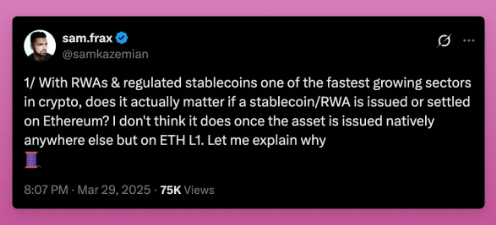
To make matters more complicated, new players like Plume, Ethena, and Securitize are targeting Ethereum’s institutional narrative — for example, by launching the traditional finance-friendly L1 chain Converge.
In short, I expect ETH to regain its status as a productive asset. A low-yield collateral that continues to depreciate cannot support a $200 billion market cap.
The most productive asset today
Which assets are most productive today?
HYPE by Hyperliquid
There are two main advantages:
- Hyperliquid generates more fee income than Solana and Ethereum, and uses it to buy back $HYPE
- The HyperEVM ecosystem with HYPE as the core is rising
HyperEVM is full of forked DeFi projects that are about to issue tokens. The strategy is simple: lock in potential protocols and deposit in HYPE.
Most dApps focus on circular leverage. Typical operation process:
- Stake HYPE LST
- Borrow assets as collateral or mint stablecoins
- Recycle with borrowed assets
If the operation is wrong, the risk is extremely high. Therefore, I adopt a conservative strategy - either stake LST or use Hyperliquid's native platform to participate in Nansen (there will be airdrops!)
Due to the rapid iteration of dApps, the situation may have changed by the time this article is published. The following is an updated list of protocols.
Frankly speaking, I plan to mine and exchange the eco-airdrop for more HYPE :(
INITIA
Although it is not online yet, I believe that there will be high-quality mining opportunities when it is first launched.
As I described in “Five Hot Projects About to Launch Tokens”, Initia’s “Divine Liquidity” mechanism allows:
- Staking INIT tokens alone
- Or stake INIT-X LP tokens (paired with INIT) that have been whitelisted by governance
- Obtaining income through the Delegated Proof of Stake (DPoS) mechanism
"Sacred Liquidity" is an excellent Ponzi token economics - it is mandatory that all ecological tokens must use more than 50% INIT as a paired token.
But I am cautious: INIT's liquidity model is similar to Berachain. Although the latter has amazing returns, it will be harvested by smart LPs if it is not operated properly.
Be sure to study the ecosystem and know when to exit.
Sonic's S and Ronin's RON
Two major ecosystems are conducting liquidity mining:
- Sonic's 200 million S token incentive plan will last until June 2025. As a core asset of the ecosystem, S has remained stable against Bitcoin despite the macro crash, outperforming ETH and SOL - this is the characteristic of productivity assets. However, June may be a terrifying moment for S holders.
- Ronin provides a $3 million reward pool, with USDC/RON and ETH/RON pools having an annualized return of approximately 75%. Click here for details
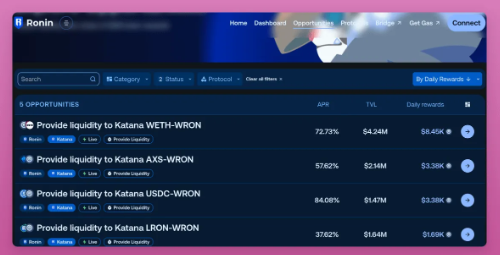
Bitcoin – An unexpected choice
Although earning interest on BTC is the holy grail, it requires a security compromise: it must be deposited in an L2 or third-party address controlled by multiple signatures.
However, BTCfi protocols like Lombard Finance have quietly accumulated $1.7 billion in TVL - more than Pancakeswap, Raydium, and Rocket Pool. With Lombard Vault, you can get income/airdrops from 6 protocols at the same time! View Vault Details
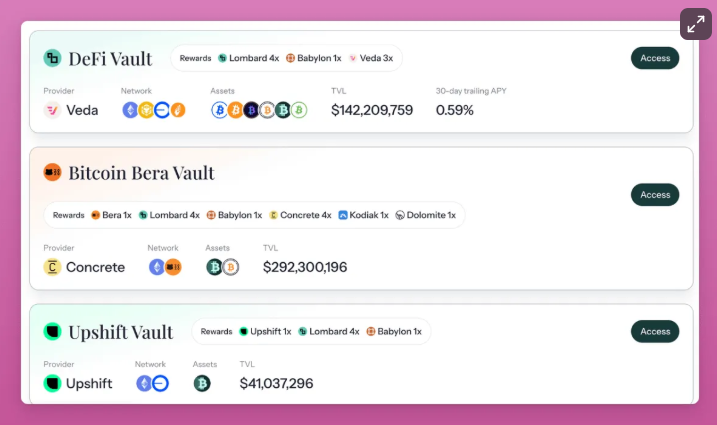
Other easy income opportunities:
- Xverse & Bob L2
- Pledge BTC to Babylon through Solv Protocol and obtain liquidity pledge certificate solvBTC.BBN
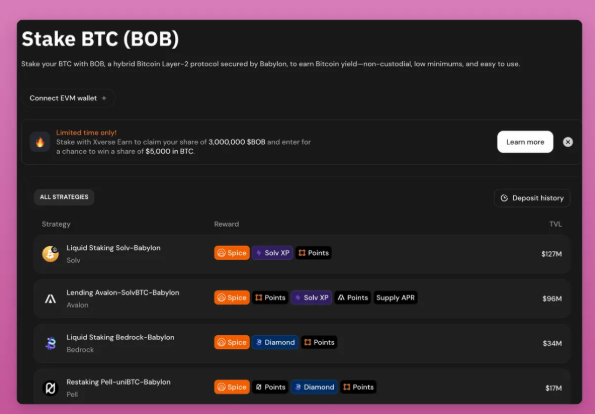
The current annualization is not obvious, but the market value of Babylon token BABY was $282 million at the time of its initial public offering, with a fully diluted valuation of $1.2 billion. In comparison, $EIGEN has a market value of $183 million and a FDV of $1.3 billion.
Perhaps the re-staking narrative is not dead, it has just moved to the Bitcoin ecosystem.
For a detailed analysis of the revenue structure, please see the following tweet:
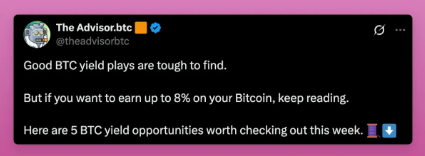
Two bad precedents for token economics
Pancakeswap is currently working closely with Binance, especially on the Binance x Pancakeswap Token Generation Events (TGEs), as Binance intends to promote its Web3 wallet.
This is good for Pancakeswap, whose trading volume has made it the second largest DEX after Uniswap. PCS generated $11.26 million in fees in a single week, only $2 million less than Hyperliquid.
But the price of CAKE did not increase as a result.
To this end, CAKE is changing the token economics: from revenue sharing and community-driven decision-making to a team-managed buyback and destruction mechanism.
The problem is this: PCS has previously “pull the rug out” at Magpie and StakeDAO protocols, which use a governance meta-aggregator business model.
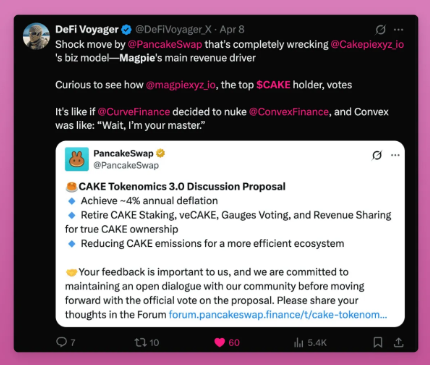
This is similar to the model of Convex and Curve - the veCRV token is used for governance and emission, but to simplify the process and accumulate rewards, the CVX token operates as a higher-layer protocol.
This will set a precedent that investors must consider before investing in similar meta-governance protocols.
Crypto.com
Even worse than PCS is the case of Crypto.com.
In short: On the eve of launching a cryptocurrency ETF basket containing CRO in cooperation with Trump Media, Crypto.com canceled the destruction status of 70% of the tokens destroyed in 2021.
Crypto.com takes scams to a whole new level. Sadly the industry seems to have forgotten about this, but I haven't. This company will always be on my blacklist.
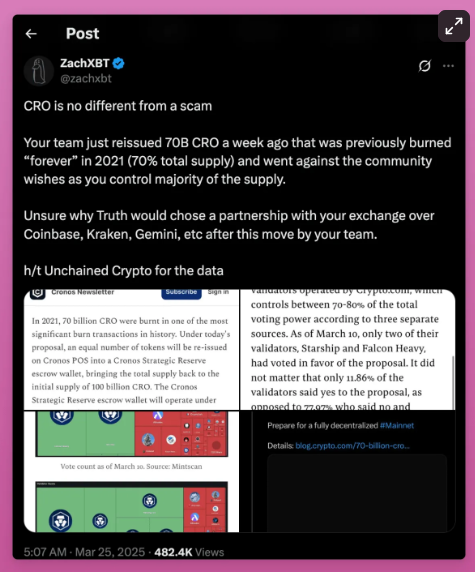
Both cases set a bad example for the industry. Investing requires predictable token economics. No wonder people only believe in Bitcoin.
If the upper limit of 21 million Bitcoins is broken one day, please be prepared for a crash.
The old DAO is dead, long live the new DAO
I think the old DAO model is being revolutionized, but the crazy macro situation is causing many people to miss out on this revolution.
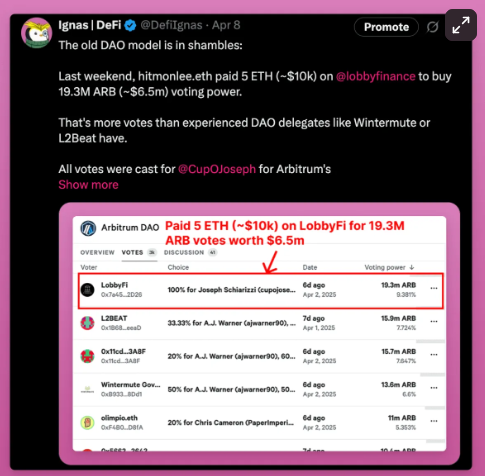
It is expected that many DAOs will begin to experiment with different voting models and token economics reforms in the coming months. As DAO tokens without real yield sharing/staking lose their appeal, the problem of DeFi lobbying (vote buying) will become increasingly serious.
- Aragon supports launching DAO in modular entity form, isolating governance through different functional plug-ins
- The most exciting one is Futarcy
It uses prediction markets to guide decision-making, aiming to improve efficiency and improve the shortcomings of the "1 token = 1 vote" model.
For example, when Arbitrum DAO considered launching staking:
Create two prediction markets:
- Market A: "If the staking mechanism is implemented, what will be the price of ARB in 6 months ? "
- Market B : " If the staking mechanism is not implemented, what will the ARB price be in 6 months ?"
Token holders bet on the market. If market A predicts a higher price than market B, a staking mechanism is used.
This could revolutionize DAO voting.
Aware of these changes, and after the Lobby Finance incident at Arbitrum, Arbitrum leadership released the Arbitrum Future Vision.
To improve efficiency, the Arbitrum Foundation and the Offchain Labs core team will take over most decision-making.
This also follows the rise of BORG (budgeted, goal-aligned, scope-bound, governable) entities, most notably Lido.
Both Lido’s BORG and Arbitrum’s new vision aim to solve core problems:
Although DAO is decentralized, it is chaotic, inefficient and lacks a clear execution structure.
In short, true decentralization does not work for Arbitrum, and teams like Lido are back in power.
Where does the future lie?
When the current government can change the direction of cryptocurrency with a single tweet, predicting the future becomes extremely difficult.
However, I am closely following the performance of the Babylon token, the progress of Initia’s token generation event, and the improvements to the user experience with Ethereum’s Pectra upgrade.
Trump’s decision to postpone the imposition of tariffs for 90 days has given the market a respite, so I think projects will try to use this window to launch new moves such as tokens and mainnet.
It’s time to go all in during these three months.
To that end, I plan to share insights into emerging cryptocurrency projects. There is so much to research!
